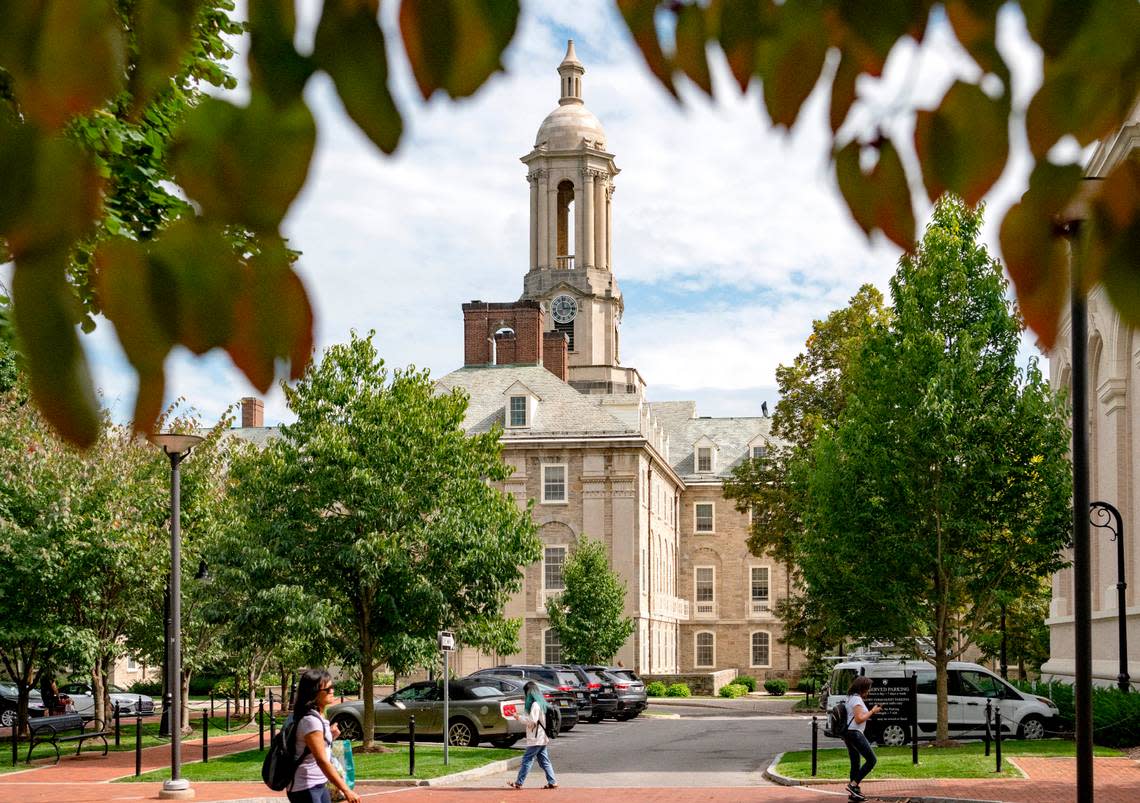Penn State set to request an increase of more than $100 million in state funding next year

(Editor’s note: This story was updated on Friday afternoon during the full Board of Trustees meeting.)
Although the Pennsylvania General Assembly has yet to finalize bills directing state funding to four universities for the 2023-2024 fiscal year, Penn State is still looking ahead to the next year — and the land-grant university is hoping for significantly more state support.
The university is set to request a 33% increase, or $120 million more, over this year’s expected state funding to bring its per-student funding more in line with its peers, officials said. That means Penn State will formally request about $483 million in total appropriations for the 2024-2025 fiscal year, which begins next July, compared to the anticipated $363 million it’s currently awaiting.
That formal appropriation request, which was approved Friday by the university’s full board of trustees, will be submitted to the state next month.
Still, any future request is far from a guarantee to be granted.
Around this time last year, for example, Penn State sought a total appropriation of $469.5 million — but instead expects to receive $363.3 million from that request. The university had specifically asked for a 47.6% increase in the general support appropriation to help ease in-state tuition and cover core teaching costs; Gov. Josh Shapiro proposed a 7.1% increase instead, and university President Neeli Bendapudi said in March she was “appreciative.”
The appropriation requests under Bendapudi have been historically high, especially in an environment that saw Penn State’s general support appropriation flatline for the three consecutive years leading up to this one. But, as the university has often reiterated, big numbers don’t necessarily mean the requests should be seen as too big.
When it comes to the general support appropriation, for example, Penn State pointed out it’s set to receive about $5,757 for each in-state undergraduate student. That does not compare favorably to other higher-education peers in the commonwealth — including Temple ($9,233), Pitt ($9,436) and those in the Pennsylvania State System of Higher Education ($8,754). The commonwealth also ranks second-to-last nationally when it comes to per-student support for public higher education.
“The fact that students attending Pennsylvania’s flagship, land-grant university are funded at a level that is between $3,000 and $3,700 less per student than the state’s other public universities is an imbalance we feel must be addressed,” Zack Moore, Penn State’s vice president for Government and Community Relations, said in a written statement. “Over the past 50 years, as Penn State’s enrollment has increased, there hasn’t been a corresponding increase in state funding to keep pace.
“All Pennsylvanians benefit from the state’s investment in Penn State, and additional support is vital to our efforts to provide affordable, high-quality degree programs that are attractive to top students and meet the needs of the state’s employers.”
Here’s a closer look at the numbers in the appropriation request:
General Support — $368.1 million (42% increase) — Helps ease in-state tuition and cover core teaching costs.
Agricultural Research and Cooperative Extension — $61.7 million (7% increase) — Helps support research conducted by the College of Agricultural Sciences, while also supporting the Penn State Extension. No tuition dollars are used here.
Emerging and Advanced Technology Initiative — $2 million (New request) — This brand-new initiative is “intended to enhance the efficiency, competitiveness and profitability of Pennsylvania agriculture through emerging technology applications and integrations,” according to the university. This is also within the College of Agricultural Sciences.
Pennsylvania College of Technology — $33.1 million (15.5% increase) — This PSU affiliate with 4,400 students is seeking funding to create “broader access” to programs such as nursing, welding, building automation, HVAC, electrical and IT-cybersecurity — all of which are needed in the commonwealth.
Penn State Health and the College of Medicine — $16.1 million (5% increase) — Helps provide medical assistance to lower-income individuals and also helps prepare medical students for careers in primary care and rural medicine.
Invent Penn State — $2.35 million (No increase) — Helps drive economic development by growing Invent Penn State’s LaunchBox and Innovation Network and helps expand access to the Pennsylvania Technical Assistance Program for small to medium enterprises.
Pennsylvania’s governor is expected to release his 2024-2025 budget proposal in February, and routine appropriation hearings will be held in March. Discussions and negotiations will then continue until a budget is finalized and passed, which is usually targeted for June or July.

